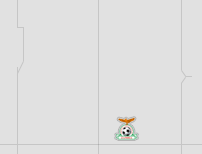
- Zambia 2017 Kitsempty Spaces The Blog Free
- Zambia 2017 Kitsempty Spaces The Blog Archive
- Zambia 2017 Kitsempty Spaces The Blog Example
In Zambia, the prevalence rate of stunting is 35 per cent (DHS 2018), down from 40 per cent in 2014. A further 9 per cent of children have a low birth weight of less than 2.5 kg. This can be an indication of lower than normal development before birth, which can be a result of maternal malnutrition. In most instances, this is not something that is detected, as a large number of newborns are not weighed at birth. Sub-optimal feeding practices are also highly prevalent.
January 12, 2021 Papa Steve Drops New Album ‘Wilalila’ + 2 New Singles. Copperbelt based gospel music sensation, Papa Steve Drops has released his latest studio Album called ‘Wilalila‘ along with two tracks. The Review aims to report findings and early recommendations to our Executive Board towards the end of the summer. Ready for opening, we placed notices in some of our gallery spaces and on the website to let visitors know about this work. We have begun changing how we recruit, select and develop the careers of people who work for NHM. The ‘new look’ of the Power BI service is evolving again based on your feedback during public preview and close to being the default experience for all users. We’ve made navigation updates to give you more space to work with your content, provided options for report authors to configure their page navigation, updated the action bar for quicker access to common actions, and more. Good morning, Allow me to speak my mind on the happenings of country Zambia.I was never there during the colonial era but what I am witnessing in our country Zambia is worse than that era. BLUE NAVY: 9, 10, 15 GOLD: 37, 33, 18 BLUE: 8, 15, 32.
Key statistics (ZDHS18):
- 76 per cent of children breasted within one hour of birth
- 70 per cent of children 0-6 months exclusively breastfed
- 23 per cent of children 6-23 months are fed with recommended minimum dietary diversity
- 13 per cent of children 6-23 months are fed with recommended minimum acceptable diet.
Micronutrient deficiencies are also common among children in Zambia. Anaemia, which is a severe public health issue, has not seen any significant reduction among children between the ages of 6 - 59 months over the past two decades, and 6 out of 10 children are anaemic, presenting 58 per cent prevalence of anaemia in children aged 6-59 months.
Additionally, the latest national micronutrient survey indicates a vitamin A deficiency prevalence of 54 per cent among children under five, while the 2013 National Iodine Deficiency Impact Survey found that only 53 per cent of households consume adequately iodised salt.
South Africa, arguably, has one of the most progressive and liberal refugee protection frameworks in Africa1 and is a signatory and party to both the 1969 OAU Refugee Convention2 and the 1951 UN Convention3 and its 1967 Protocol4.
Unlike many other jurisdictions, South Africa’s current Refugees Act, which was adopted in 1998, does not have an encampment system and has historically adopted a policy of free movement where asylum seekers and refugees are allowed to live alongside citizens.
South Africa also allows asylum seekers to seek employment or be self-employed, which allows them to be independent and to live with some semblance of dignity. Asylum seekers and refugees also have access to social welfare services such as healthcare and education.
Amendments to the Refugees Act
South Africa’s Refugees Act was amended in 2008 and 2011; however, these amendments have still not come in o effect and will only come into effect on a date proclaimed by the president. The president has still not made a proclamation. These proposed amendments did not, however, erode the rights of refugees.
Zambia 2017 Kitsempty Spaces The Blog Free
In 2015, the South African government introduced a further amendment to its Refugees Act through the Portfolio Committee on Home Affairs, which tabled the 2015 Refugees Amendment Bill.
The changes proposed in the Refugees Amendment Bill were arguably an attempt to narrow the content and scope of refugee protection in South Africa and, in some respect, limit the rights afforded to asylum seekers and refugees.
The amendments attempted to roll back the substantial progress that has been made over the years and indicate an intention to move away from a liberal and human rights approach to a more restrictive one. Despite calls from civil society and several submissions to parliament on the worrying nature of the amendments, Parliament adopted and passed the Refugees Amendment Bill which was then signed into law by President Zuma in December 2017.
However, strangely enough, it has not come into effect and will only come into effect once the 2008 and 2011 amendments come into effect. The Department of Home Affairs (DHA) has subsequently published the 2018 Draft Refugees Regulations, which aim to give effect to the new amendments in the Refugees Amendment Act.
It now appears that the day when the Refugees Amendment Act will finally come into effect is close.
Why is the Refugees Amendment Act so terrible and what effect will it have?
The proposed amendments introduced additional categories of persons who would automatically be excluded in terms of section 4 of the Refugees Act and, furthermore, introduced administrative hurdles which may have the effect of causing further delays in processing applications for asylum.

The asylum application system is already fraught with huge backlogs, a lack of human capacity, poor quality of decisions regarding applications and corruption but, regrettably, the new proposed changes do not effectively deal with any of these systemic issues.
One of the more alarming amendments proposed by the Refugees Amendment Act is the removal of the automatic right to seek and attain employment, which is currently afforded to asylum seekers. In removing this right to seek and attain employment, the Refugees Amendment Act fails to deal with how asylum seekers will be able to obtain food, shelter, clothing and other basic necessities for themselves and for their families.
Both the right to engage in work and self-employment have already been adjudicated by our courts and the courts have held that the freedom to engage in productive work is an important component of human dignity. The omissions created by the Refugees Amendment Act will lead to the gross violation of human rights.
An approach which aims to roll back on the progressive approach to refugee protection is also echoed in South Africa’s 2016 Green Paper on International Migration, which is a policy paper that seeks to overhaul the country’s migration and refugee protection policy.
The Green Paper proposes the establishment of ‘Asylum Seeker Processing Centres’ which will aim to house asylum seekers and restrict their movement while their asylum applications are being processed. This will be in conflict with South Africa’s urban refugee policy which includes free movement.
The Green Paper is silent on who will provide food and basic services to asylum seekers housed in these processing centres. The proposed removal of the right to work and the introduction of quasi camp-like centres is an attempt to make South Africa less of a desirable asylum destination and to curtail what the state refers to as ‘pull factors’ that draw asylum seekers to South Africa.
Why is South Africa moving in this direction?
The timing of when the Refugees Amendment Bill, 2015 was introduced is indicative. At the end of 2014, the office of the United Nations High Commissioner for Refugees (UNHCR) reported that there were 59.5 million5 people globally who had been displaced by conflict, persecution, violations of human rights and generalised violence.
Of the fifteen conflicts throughout the world that have erupted or reignited, over fifty percent of them have taken place in Africa, specifically in Côte d'Ivoire, the Central African Republic (CAR), Libya, Mali, the north eastern parts of Nigeria, the Democratic Republic of Congo (DRC), South Sudan and, more recently, Burundi6.
By mid-2015, the conflict in Somalia resulted in 1.1 million people fleeing the country as refugees, the third highest number of people seeking refuge in Africa. Somalia is closely followed by South Sudan (744,100), Sudan (640,900), the DRC (535,300) and the CAR (470,600)7.
Sub-Saharan Africa alone accounts for more than 4.1 million refugees, which is the largest proportion of the world’s total refugees hosted by a single region, with more than half of the top ten refugee-producing countries located in sub-Saharan Africa.
The year 2015 saw an unprecedented and record-high level of displaced persons, not just in the world, but in Africa. As noted above, due to South Africa’s progressive and liberal refugee protection framework South Africa has become a prime asylum destination.
Even though South Africa is in the southernmost point of Africa, it draws asylum seekers from as far as the eastern and western parts of Africa. In 2015 alone, South Africa received 71,914 new asylum applications, 9,322 of which came from as far as Ethiopia and 6,554 from Nigeria8. Asylum seekers from these two countries skipped Tanzania, Zambia, Namibia and Botswana and opted to apply for asylum in South Africa because it is perceived as an ideal place to seek protection.
As conflicts in Africa continue to rage on with no apparent end in sight, African states have begun to retreat in their approach to refugee protection which has moved from what Rutinwa9 described as the ‘open door’ policy to one of self-interest and self-preservation.
It appears that South Africa’s new approach is to make it much harder for asylum seekers and refugees to enter or remain in the refugee system, in the hope that it will deter or hinder people from coming to South Africa. This constitutes a naïve and misguided approach, in the same way that thinking if you build a wall you will keep people out.
South Africa rather needs to maintain a transparent, efficient and fair asylum process that is grounded in the promotion and respect for human rights.
Zambia 2017 Kitsempty Spaces The Blog Archive
References
[1] Though sometimes the implementation of the legislation and policy is not in line with the spirit and purpose of the legislation.
[2] 1969 Organisation of African Unity (OAU) Convention Governing the Specific Aspects of Refugee Problems in Africa.
Zambia 2017 Kitsempty Spaces The Blog Example
[3] 1951 United Nations Convention Relating to the Status of Refugees.
[4] 1967 Protocol Relating to the Status of Refugees.
[5] United Nations High Commissioner for Refugees. 2015. World at War. Global Trends. Forced Displacement in 2014. Read here
[6] United Nations High Commissioner for Refugees. 2015. World at War: UNHCR Global Trends – Forced Displacement in 2014. Read here
[7] United Nations High Commissioner for Refugees. 2015b. Mid-Year Trends 2015. Read here
[8] Department of Home Affairs. 2016. 2015 Asylum Statistics; Analysis and Trends – Presentation to the Portfolio Committee of Homes Affairs. Read here
[9] Okoth-Obbo, G. 2001. Thirty years on: A legal review of the 1969 OAU Refugee Convention Governing the Specific Aspects of Refugee Problems in Africa. Refugee Survey Quarterly, 20(1). Read here